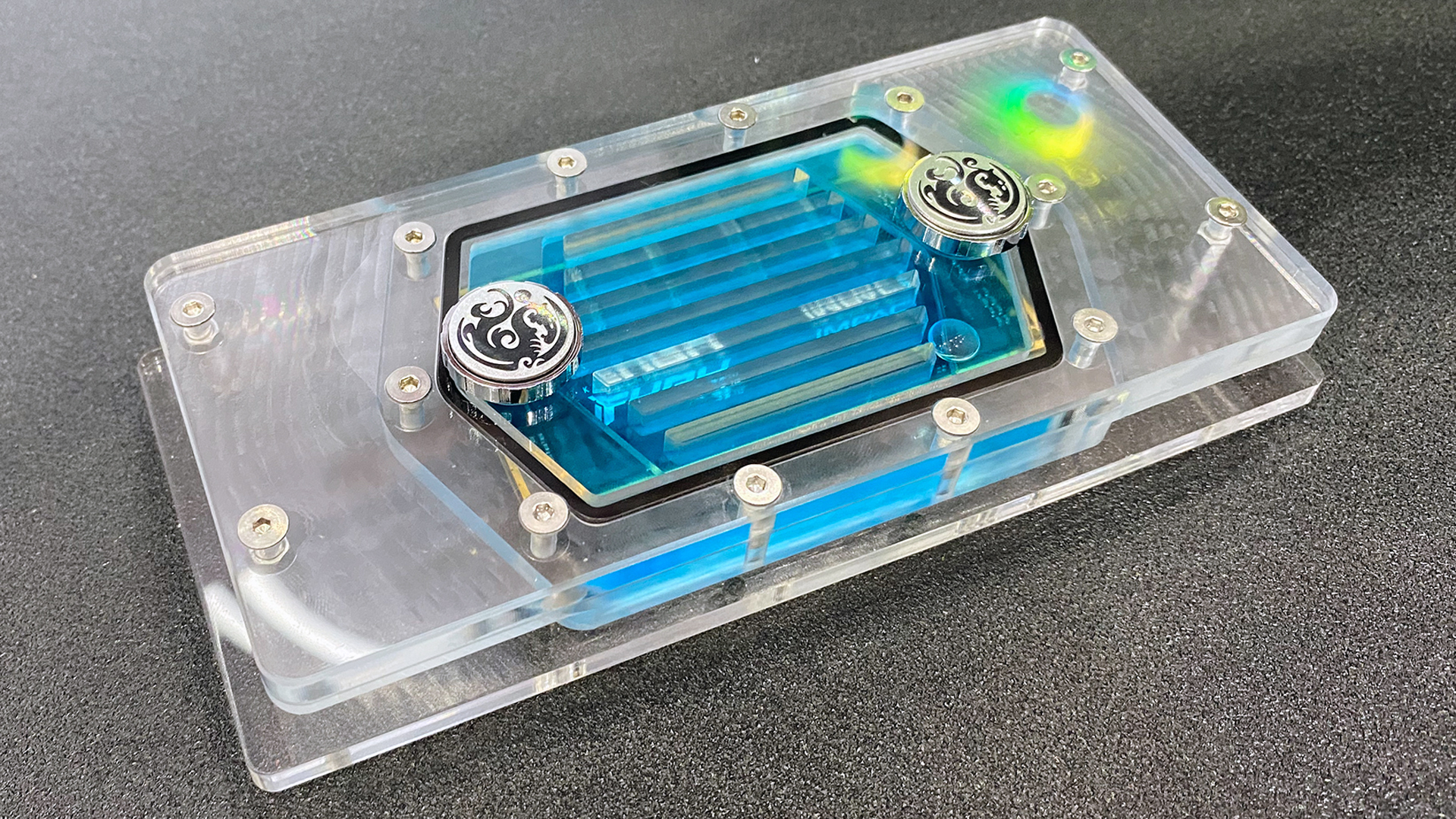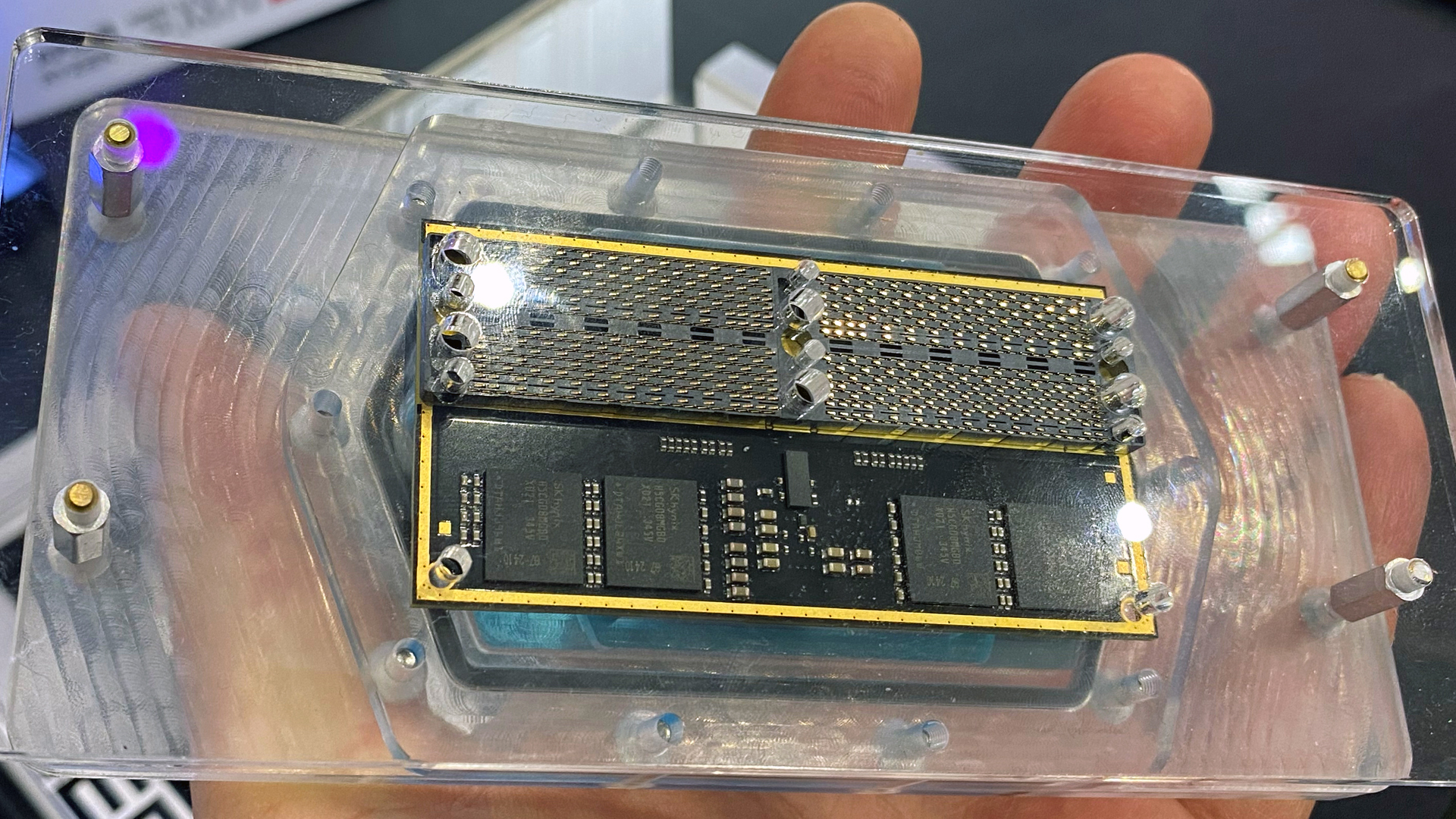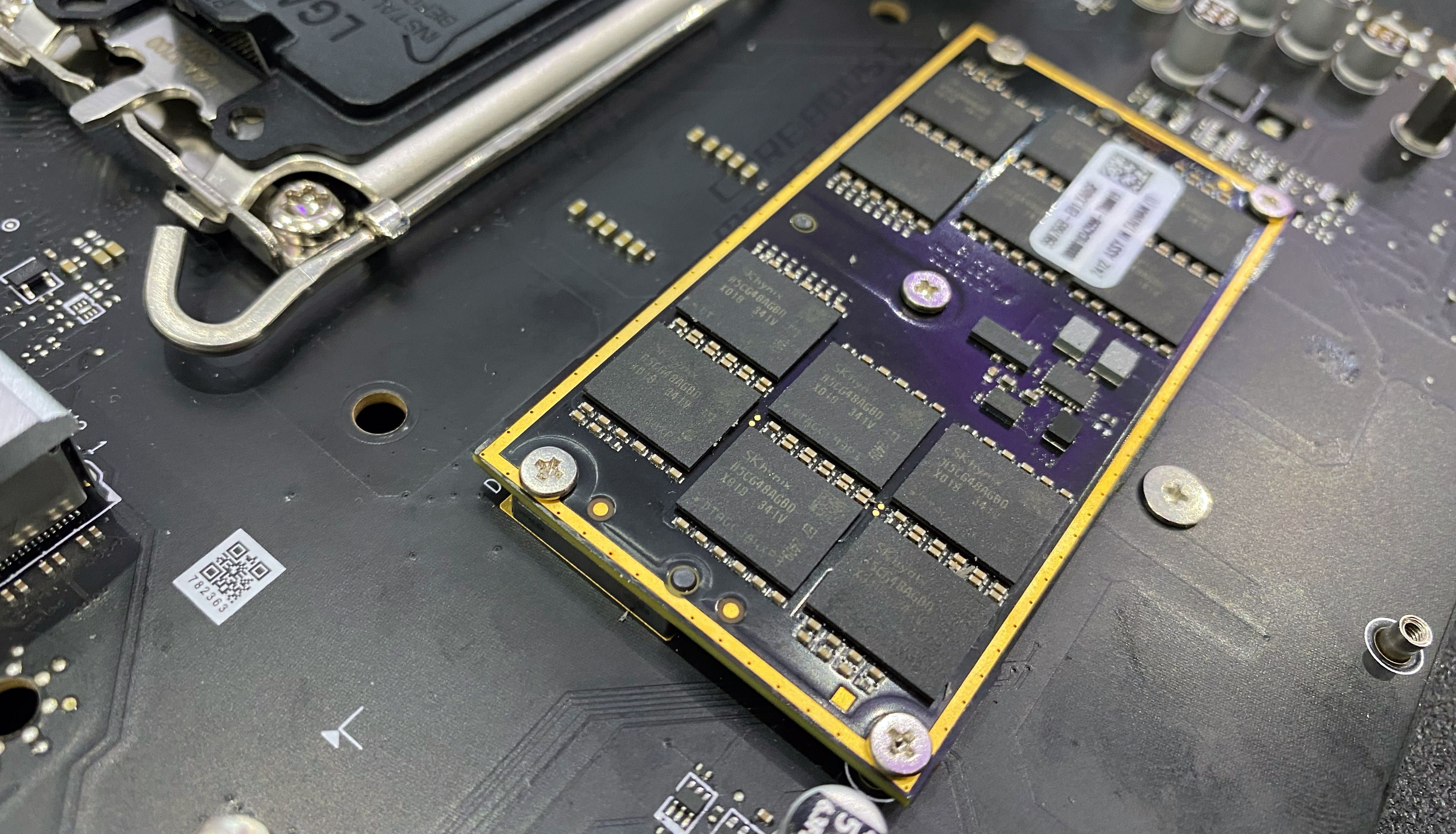
When MSI introduced its desktop motherboard with a socket for CAMM2 memory modules a few weeks ago, we scratched our heads — as these modules were designed primarily with laptops in mind and they do not have any noticeable advantages for desktops. But the company has apparently thought of one: it is easier to cool down a CAMM2 memory module using liquid compared to liquid cooling of regular DIMMs.
To prove its point, MSI developed a special waterblock for its Z790 Project Zero Plus motherboard that is designed specifically to be installed on a CAMM2 memory module with DDR5 memory. The setup looks pretty neat, but for some reason MSI did not demonstrate such a system in action — perhaps because the product is far from final, or because CAMM2 is still in its infancy and there are no such modules with cherry-picked DRAMs designed for overclocking.

While MSI's idea to cool CAMM2 modules using liquid looks strange — if not absurd — it may actually make a lot of sense. CAMM2 modules with DDR5 memory carry power IC and voltage regulating modules, which tend to heat — just like memory chips themselves. Cooling down PMIC, VRM, and DRAM with liquid will obviously increase the overclocking potential of the module. Furthermore, since CAMM2 modules are attached to motherboards horizontally, it is indeed easier to build and install waterblocks for them.

Of course, such a concept requires several factors fall into place to be fruitful. First, the motherboard maker (MSI, in this case) will have to ensure sophisticated, clean power delivery to the modules. Second, the DRAM module maker (Kingston, in this case) will need to cherry pick DRAM ICs with maximum performance potential (which is nothing new for the company) and will have to ensure ultimate quality of the module itself (i.e., build custom PCB for overclocking). Third, waterblocks for CAMM2 modules have to be readily available.
While it is easier to cool down CAMM2 modules using a waterblock, it should be kept in mind that this form-factor was designed for density, not for ultimate performance. Therefore its signal contacts are located very close to each other, which could result in such effects as cross talk and interference. This is not a problem for operation at standard frequencies, but it usually affects overclocking potential.







